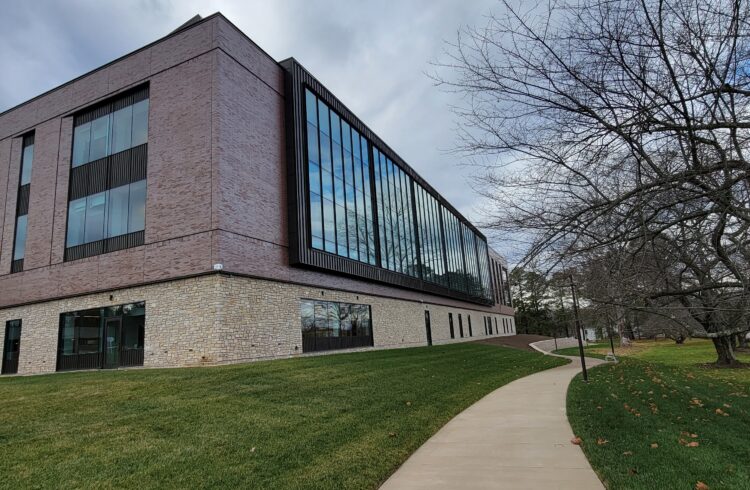
The University of Virginia Medical Center in cooperation with Morrison Management Specialist continues its fight against obesity with the launch of the Signals for Health TM program. UVa’s Wahoo West cafeteria is now labeling foods with red, yellow and green signs similar to traffic signals to let consumers know which foods are healthiest, which should be eaten in moderation and those which should only be eaten occasionally.
Modeled on the Medical Center’s Healthy Vending program the Signals for Health TM program is designed to encourage the purchase of healthy foods by providing easy-to-understand nutrition information directly to the consumer. Signals choices are defined by their calories, total and saturated fat, and sodium content, classified into red (eat sparingly or occasionally), yellow (eat moderately), and green (eat and enjoy) food items.
“The obesity epidemic in this country is real and it is killing us. Life expectancy is going down for the first time since the Civil War – largely due to obesity and the diseases it causes like diabetes. We need to encourage everyone to eat healthier foods and there’s no more appropriate place to start than a hospital cafeteria” said Arthur Garson Jr., M.D., dean of the University of Virginia School of Medicine. “We hope that by presenting our employees and visitors with the nutritional information about the foods they eat, they will make healthier choices and start down the path to a healthier lifestyle.”
Nutritional information and the corresponding color will be posted by all food items. The visual appearance of the food will also reflect its assigned color (e.g. red items will be served in red pans). Other signage in Wahoo West will include: table tents, buttons, and monthly newsletters designed to increase awareness of the program.
Charlottesville Mayor David Brown said the city would closely follow the six-month pilot program to see how UVa.’s experience could be applied in the community.
“We really want to see this program work here and see it as a potential model for school cafeterias and employee wellness programs,” Brown said. “We believe that encouraging children and city employees to eat healthier foods will not only reduce healthcare costs but also lead to a more enjoyable lifestyle.”
Garson added “A recent study showed that people guess wrong about how many calories are in restaurant food – on average they are wrong by 100 percent if an item is 1000 calories they guess 500. Therefore, simply educating people should go a long way.”
For most people, their nutritional education ends after they have left school. The Signals for Health Program is a friendly reminded for users of the cafeteria that eating healthier is easier than they may believe.
“I believe some of our employees may be surprised when they see the nutritional value of their meal choices,” said R. Edward Howell, vice-president and CEO of the University of Virginia Medical Center.
Howell adds that many employees know that eating healthier and exercising more is simply the right thing to do, so this program will give them a timely reminder each time they visit the cafeteria.
Results from the first year of the Healthy Vending program showed sales of the red items went down 5 percent; the yellow went up 30 percent and the green items went up 15 percent. Overall sales increased by 4.5%.
“We demonstrated with our Health Vending program that consumers make healthier choices when given the opportunity,” Garson added.
To listen to Dean Garson explain the program, click the following link: http://www.cvillepublicmedia.org/stories/signalsforhealth.mp3


